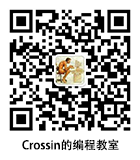关于爬虫的案例和方法,我们已讲过许多。不过在以往的文章中,大多是关注在 如何把网页上的内容抓取下来 。今天我们来分享下,当你已经把内容爬下来之后, 如何提取出其中你需要的具体信息 。
网页被抓取下来,通常就是 str 字符串类型的对象 ,要从里面寻找信息,最直接的想法就是直接通过字符串的 find 方法 和 切片操作 :
s = '<p>价格:15.7 元</p>'
start = s.find('价格:')
end = s.find(' 元')
print(s[start+3:end])
# 15.7
这能应付一些极简单的情况,但只要稍稍复杂一点,这么写就会累死人。更通用的做法是使用 正则表达式 :
import re
s = '<p>价格:15.7 元</p>'
r = re.search('[\d.]+', s)
print(r.group())
# 15.7
正则表达式是处理文本解析的万金油,什么情况都可以应对。但可惜掌握它需要一定的学习成本, 原本我们有一个网页提取的问题,用了正则表达式,现在我们有了两个问题。
HTML 文档本身是 结构化的文本 ,有一定的规则,通过它的结构可以简化信息提取。于是,就有了 lxml、pyquery、BeautifulSoup 等网页信息提取库。一般我们会用这些库来提取网页信息。其中, lxml 有很高的解析效率,支持 xPath 语法 (一种可以在 HTML 中查找信息的规则语法); pyquery 得名于 jQuery(知名的前端 js 库),可以用类似 jQuery 的语法解析网页 。但我们今天要说的,是剩下的这个:
BeautifulSoup
BeautifulSoup(下文简称 bs)翻译成中文就是“美丽的汤”,这个奇特的名字来源于《 爱丽丝梦游仙境 》(这也是为何在其官网会配上奇怪的插图,以及用《爱丽丝》的片段作为测试文本)。
bs 最大的特点我觉得是 简单易用 ,不像正则和 xPath 需要刻意去记住很多特定语法,尽管那样会效率更高更直接。 对大多数 python 使用者来说,好用会比高效更重要 。这也是我自己使用并推荐 bs 的主要原因。
接下来介绍点 bs 的基本方法,让你看完就能用起来。考虑到“只收藏不看党”的阅读体验,先给出一个“ 嫌长不看版 ”的总结:
- 随 anaconda 附带,也可以通过 pip 安装
- 指定 不同解析器在性能、容错性上会有差异 ,导致结果也可能不一样
- 基本使用流程: 通过文本初始化 bs 对象 -> 通过 find/find_all 或其他方法检测信息 -> 输出或保存
- 可以迭代式的查找,比如先定位出一段内容,再其上继续检索
- 开发时应注意不同方法的返回类型,出错时多看报错、多加输出信息
- 官方文档 很友好,也有中文,推荐阅读
安装
推荐使用 pip 进行安装(关于 pip 见前文《Crossin:如何安装 Python 的第三方模块》):
pip install beautifulsoup4
要注意,包名是 beautifulsoup4 ,如果不加上 4,会是老版本也就是 bs3,它是为了兼容性而存在,目前已不推荐。我们这里说 bs,都是指 bs4。
bs4 也可以直接通过安装 anaconda 获得(介绍见前文《Crossin:Python数据科学环境:Anaconda 了解一下》)。
bs 在使用时需要指定一个“ 解析器 ”:
- html.parse - python 自带,但容错性不够高,对于一些写得不太规范的网页会丢失部分内容
- lxml - 解析速度快,需额外安装
- xml - 同属 lxml 库,支持 XML 文档
- html5lib - 最好的容错性,但速度稍慢
这里的 lxml 和 html5lib 都需要额外安装,不过如果你用的是 anaconda,都是一并安装好的。
快速上手
我们就用官网上的文档作例子:
html_doc = """
<html><head><title>The Dormouse's story</title></head>
<body>
<p class="title"><b>The Dormouse's story</b></p>
<p class="story">Once upon a time there were three little sisters; and their names were
<a href="http://example.com/elsie" class="sister" id="link1">Elsie</a>,
<a href="http://example.com/lacie" class="sister" id="link2">Lacie</a> and
<a href="http://example.com/tillie" class="sister" id="link3">Tillie</a>;
and they lived at the bottom of a well.</p>
<p class="story">...</p>
"""
使用 bs 的初始化操作,是用文本创建一个 BeautifulSoup 对象,建议手动指定解析器:
from bs4 import BeautifulSoup
soup = BeautifulSoup(html_doc, 'html.parser')
获取其中的某个结构化元素及其属性:
soup.title # title 元素
# <title>The Dormouse's story</title>
soup.p # 第一个 p 元素
# <p class="title"><b>The Dormouse's story</b></p>
soup.p['class'] # p 元素的 class 属性
# ['title']
soup.p.b # p 元素下的 b 元素
# <b>The Dormouse's story</b>
soup.p.parent.name # p 元素的父节点的标签
# body
并不是所有信息都可以简单地通过结构化获取,通常使用 find 和 find_all 方法进行查找:
soup.find_all('a') # 所有 a 元素
# [<a class="sister" href="http://example.com/elsie" id="link1">Elsie</a>,
# <a class="sister" href="http://example.com/lacie" id="link2">Lacie</a>,
# <a class="sister" href="http://example.com/tillie" id="link3">Tillie</a>]
soup.find(id='link3') # id 为 link3 的元素
# <a class="sister" href="http://example.com/tillie" id="link3">Tillie</a
- find 和 find_all 可以有多个搜索条件叠加,比如 find('a', id='link3', class_='sister')
- find 返回的是一个 bs4.element.Tag 对象 ,这个对象可以进一步进行搜索。如果有多个满足的结果,find 只返回第一个 ;如果没有,返回 None。
- find_all 返回的是一个 由 bs4.element.Tag 对象组成的 list ,不管找到几个或是没找到,都是 list。
输出:
x = soup.find(class_='story')
x.get_text() # 仅可见文本内容
# 'Once upon a time there were three little sisters; and their names were\nElsie,\nLacie and\nTillie;\nand they lived at the bottom of a well.'
x.prettify() # 元素完整内容
# '<p class="story">\n Once upon a time there were three little sisters; and their names were\n <a class="sister" href="http://example.com/elsie" id="link1">\n Elsie\n </a>\n ,\n <a class="sister" href="http://example.com/lacie" id="link2">\n Lacie\n </a>\n and\n <a class="sister" href="http://example.com/tillie" id="link3">\n Tillie\n </a>\n ;\nand they lived at the bottom of a well.\n</p>\n'
如果你有前端开发经验,对 CSS 选择器很熟悉,bs 也为你提供了相应的方法:
soup.select('html head title')
# [<title>The Dormouse's story</title>]
soup.select('p > #link1')
# [<a class="sister" href="http://example.com/elsie" id="link1">Elsie</a>]
以上就是 BeautifulSoup 的一个极简上手介绍,对于 bs 能做什么,想必你已有了一个初步认识。如果你要在开发中使用,建议再看下它的 官方文档 。文档写得很清楚,也有中文版,你只要看了最初的一小部分,就可以在代码中派上用场了。更多的细节可以在使用时进一步搜索具体方法和参数设置。
中文版文档 地址:
Beautiful Soup 4.2.0 文档www.crummy.com
对于爬虫的其他方面,推荐阅读我们之前的相关文章:
- Chrome开发者工具:爬虫必备,掌握它就解决了一半的问题
- requests:让你的爬虫开发效率提升8倍
- goose 简介:一鹅在手,抓遍全球
- IP代理池:听说你好不容易写了个爬虫,结果没抓几个就被封了?
- selenium - 祖传爬虫利器
- Python爬虫:一些常用的爬虫技巧总结
- 爬虫+网站开发实例:电影票比价网
════
其他文章及回答:
学编程:如何自学Python | 新手引导 | 一图学Python
欢迎搜索及关注: Crossin的编程教室


**粗体** _斜体_ [链接](http://example.com) `代码` - 列表 > 引用。你还可以使用@来通知其他用户。